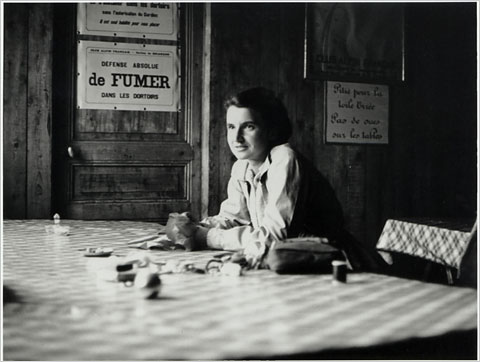|
|
||||
| Olivia
Judson
November 3, 2009 In the wake of my column last week about how the faces you make when speaking different languages might affect your mood, several people wrote and accused me of speculating. I admit it! Indeed, I said as much in the piece. One of my favorite things to do is to take a set of facts and use them to imagine how the world might work. In writing about some of these ideas, my aim is not to be correct — how can I be, when the answer isn’t known? — but to be thought-provoking, to ask questions, to make people wonder. I mention this because science is usually presented as a body of knowledge — facts to be memorized, equations to be solved, concepts to be understood, discoveries to be applauded. But this approach can give students two misleading impressions. One is that science is about what we know. One colleague told me that when he was studying science at school, the relentless focus on the known gave him the impression that almost everything had already been discovered. But in fact, science — as the physicist Richard Feynman once wrote — creates an “expanding frontier of ignorance,” where most discoveries lead to more questions. (This frontier — this peering into the unknown — is what I especially like to write about.) Moreover, insofar as science is a body of knowledge, that body is provisional: much of what we thought we knew in the past has turned out to be incomplete, or plain wrong. The second misconception that comes from this “facts, facts, facts” method of teaching science is the impression that scientific discovery progresses as an orderly, logical “creep”; that each new discovery points more or less unambiguously to the next. But in reality, while some scientific work does involve the plodding, brick-by-brick accumulation of evidence, much of it requires leaps of imagination and daring speculation. (This raises the interesting question of when speculation is more likely to generate productive lines of enquiry than deductive creep. I don’t know the answer — I’d have to speculate.) Vittorio Luzzati/National Portrait Gallery in London Rosalind Franklin in 1950.  There are plenty of (probably) apocryphal tales about what inspired a great discovery, from Archimedes in his bathtub, to Newton and his apple. But there are also many well-documented accounts of inspiration — or lack of it — in the history of science. Among the most famous is the story of Rosalind Franklin and her non-discovery of the structure of DNA. Franklin was an expert at getting x-ray diagrams from crystals of molecules. The idea is that the array of spots in the diagram will reveal how the atoms in the crystal are arranged. When Franklin started working on DNA, she obtained superb x-ray diagrams; one of her contemporaries described them as among the most beautiful of any substance ever taken. Indeed, it was from one of her diagrams that James Watson and Francis Crick deduced what the correct structure of DNA must be. (The picture was shown to Watson without Franklin’s knowledge.) She had the data. Why didn’t she reach the solution? There are several answers to this; but one is that she had a fixed idea about how the problem should be solved. Namely, she wanted to work out the structure using the methods she had been taught. These methods are intricate, abstract, and mathematical, and difficult to use on a molecule as complex as DNA. Watson and Crick, meanwhile, were building physical models of what the diagram suggested the structure should be like — an approach that Franklin scorned. What’s more, their first model was ludicrously wrong, something that Franklin spotted immediately. But they were willing to play; she wasn’t. In other words, she wouldn’t, or couldn’t, adopt a more intuitive, speculative approach. Our ability to make scientific discoveries is limited in a number of fundamental ways. One is time: it’s hard to do good experiments that last for more than a few weeks. Experiments that run for years are rare; as a result, we know relatively little about long, slow processes. Another constraint is money (no surprise there); a third is ethics (some experiments that would be interesting to do are ethically impossible). Some questions remain uninvestigated because no one stands to profit from the answers. Still others are neglected because they have no obvious bearing on human health or welfare, the areas of research are unfashionable, or the appropriate tools haven’t been invented yet. Some problems are just overwhelmingly complex. But there’s one way in which we should not be limited: imagination. As Einstein put it, “Imagination is more important than knowledge. Knowledge is limited. Imagination encircles the world.” Notes: Why Rosalind Franklin didn’t solve the structure of DNA when she had the data has been much discussed; see, in particular, Maddox, B. 2002. “Rosalind Franklin: The Dark Lady of DNA” Harper Collins. See also, Judson, H. F. 1996. “The Eighth Day of Creation: Makers of the Revolution in Biology” Expanded Edition. Cold Spring Harbor Press; and Watson, J. D. 2001. “The Double Helix: A Personal Account of the Discovery of the Structure of DNA.” Touchstone Press. Many thanks to Daniel Brockert, Dan Haydon, Horace Judson and, especially, Gideon Lichfield, for insights, comments and suggestions. |
||||